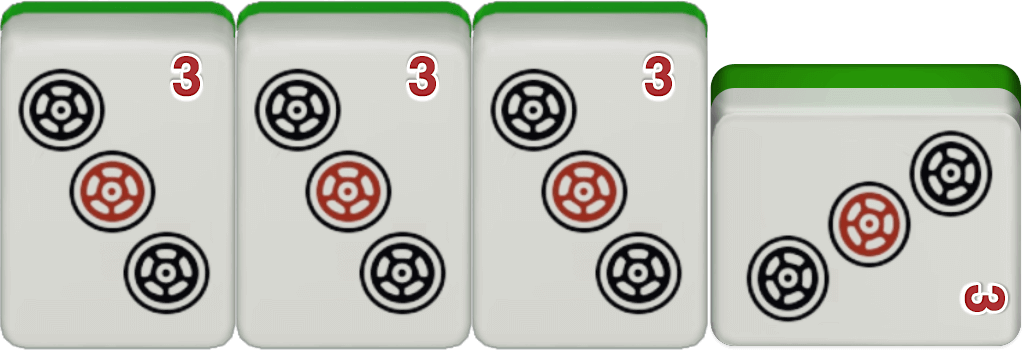Melded Kong
What Is Melded Kong
A Melded Kong in Chinese Mahjong is formed by exposing four identical tiles, typically by upgrading an exposed Pung or claiming a discard to complete four-of-a-kind. Each Melded Kong is worth 1 fan, providing a straightforward way to boost your score, particularly in pung-based hands. The extra draw associated with declaring a Kong (if your ruleset applies it) can also accelerate your progress. However, revealing that you hold all four copies of a tile can provide opponents with valuable insight, and committing to a Kong reduces your hand’s flexibility. Weigh these pros and cons carefully to determine the best timing for declaring a Melded Kong in pursuit of a winning Mahjong hand.
The Tile Pattern of Melded Kong

Four Identical Tiles: A Kong is always four of the same rank and suit (e.g., four 5 of Bams or four Red Dragons).
Exposed Placement: Since it is melded, it is placed face-up on the table. Depending on the specific house rules or tournament format, if you upgrade an exposed Pung to a Kong, you usually add the fourth tile horizontally to indicate the upgrade.
Fan Value of Melded Kong
Melded Kong is worth 1 fan. If you declare multiple melded kongs, each kong should provide +1 fan, assuming your specific ruleset allows each instance to count separately.
Strategies and Considerations of Melded Kong
Extra Draw: In many Mahjong rule sets, declaring a Kong entitles you to draw an extra tile from the dead wall. This can accelerate your hand completion. Verify your local rules to confirm this bonus draw.
Pursuit of “All Pungs” or Other Patterns: If you’re aiming for an All Pungs hand, or other pung-oriented patterns (like Pung of Terminals/Honors), a Kong can be an excellent addition because it counts as a bigger Pung and provides an extra fan.
Scoring Boost: Even if your overall hand isn’t pung-focused, each Melded Kong adds a straightforward +1 fan to your final score.
Revealing Information: By exposing a Kong, you confirm to other players that you hold all four copies of that tile. This can give away clues about your waiting tiles or your hand’s composition (e.g., you may not need that suit anymore).
Reduced Flexibility: Once you’ve committed four tiles to a melded set, you lose any potential option of breaking those tiles into pairs or sequences. Make sure you won’t need one of those tiles for a more valuable pattern.
Discard Risk: If you claim a discard to form a Melded Kong, you typically skip the opportunity to draw from the wall (unless you receive an extra tile from the dead wall after forming the Kong). Also, forming a Kong might shift your turn order in certain rules, potentially affecting your timing.
Late-Game Strategy: Declaring a Kong late in the hand can be beneficial if you’re close to winning. You gain +1 fan plus an extra draw (if allowed), possibly helping you finish your hand or achieve a higher score.
Early-Game Caution: Declaring an early Kong can be risky, as it provides significant information to opponents about the tiles no longer available. If your hand is not close to completion, you may be giving an advantage to others.
Combining Multiple Kongs: Some hands might feasibly include two or more Kongs. Each Melded Kong adds +1 fan. If your hand contains multiple Kongs, the scoring can accumulate, though you must balance the pros and cons of exposing so many tiles.
LEARN
TOOLS
